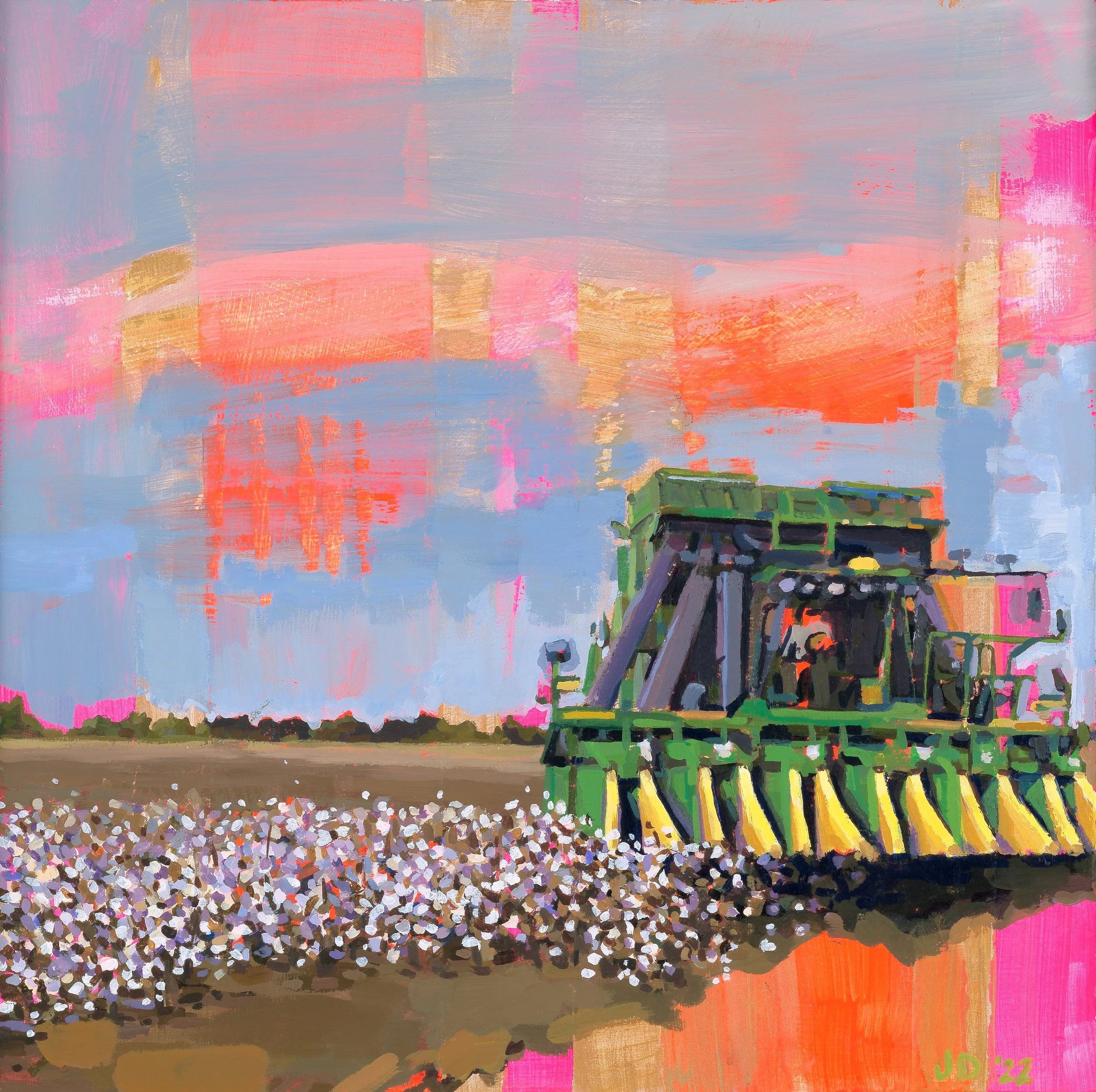How It All Began
Jennifer Drinkwater. More Than an Asset, acrylic on wood panel, 12” x 12”, 2022. Sold. Now available in limited edition prints.
Mississippi made me an artist. Y'all may know that.
What you might not know is that it took me 20 more years to call myself an artist.
Never mind that I had a long line of very supportive art instructors and mentors who told me I was an artist.
(Looking at y’all, Butch Almond, Bubba Watkins, Roxanne Hilman, Betty Mitchell Gober, Sandy Chism, Ronna Harris, Ron Graziani, and Paul Hartley.)
Some of my undergrad work , circa 2001. Lots of large animal mug shots. I was flirting with veganism at this point in my young life.
My academic background was a jumble of painting, art history, and cultural anthropology, which, among other things, left me a very confused student.
I graduated high school and college (and grad school if I'm honest) feeling “not-an-artist.”
Here’s the rub. I believed the crap myths about artists, namely they were: broke, starving, self-isolating, struggling, effortlessly super-talented, obsessed with their work, and a little goth (bc it was the late 90’s).
(Here would be a good time to mention that I'm also, by nature, a worst-case scenario expert. Like I probably should've been an actuary. And if you're predisposed to scanning the horizon for danger, you can find it everywhere.)
Scanning the horizon for danger. Part of the Surveillance series, Ames, Iowa, 2014.
So I graduated feeling “not-an-artist.” Instead, I felt “perhaps-a-PhD-in-anthropology?” and “maybe-law-school?”.
Fortunately, I took to the woods for two years to sort this out. A whole nother story that ended with me dropping out of graduate program before I even started (oops) and moving to Altanta in my twenties to pursue, you guessed it, art.
the woods I took to.
Time passes. I now make art, yet am still “not-an-artist.”
Never mind that I behaved as an artist: I had 2 art degrees, taught art, made art, sold art.
Then, in my 30’s, two things happened: I got sick and tired of being negative and I started working in communities.
I started meeting folks, creative folks who made their own rules. Who used theatre to bridge local divides, who made pop-up installations to discuss water quality, or who transformed an old post office into a community space.
From these amazing folks, I learned that making things better happens by focusing on what's already working, as opposed to searching for danger. It’s science.
So I started collecting stories by and about the folks changing their communities by putting energy into making what's good, better.
A funny thing happened. By getting out of the studio, I changed my own narrative about who artists are (all of us), what artists can do (create impact), and how artists can act (effectively, civically, socially).
What's evolved is a minor obsession with the intersections of people, community, and art.
Want to decipher Southerners? Read Mississippi-isms, a crowd-sourced blog post about how we talk so we don't get on all y'all's last nerve.
Not to shaft the Midwest, I invited the locals here to share How to Speak Iowegian. Learn the appropriate times for "ope" - hint: all times are appropriate.




